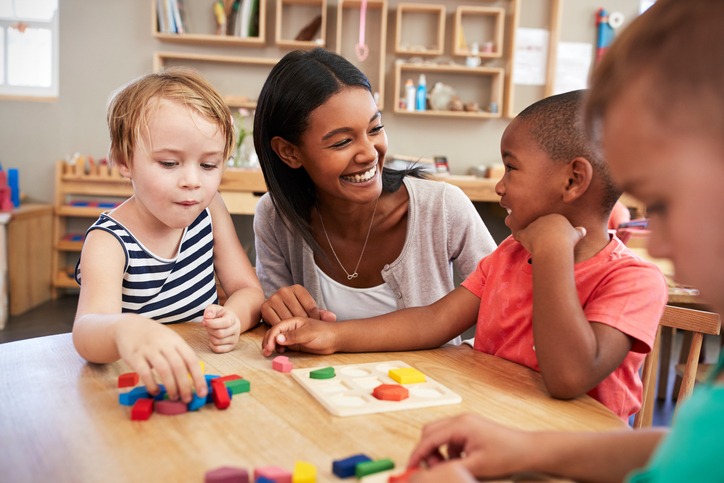
I recently visited a kindergarten classroom to observe a child with “behavior problems.” When I arrived, the little boy was busying himself with an art project. He and his classmates were building towers out of cardboard box pieces. Everything seemed fine until a peer suddenly grabbed the glue from him, knocking his beloved project to the floor. Looking confused and upset, he scanned the room for his teacher, who was helping another student. Not sure what to do, the child began to cry, moved his chair, and crawled under the table, at the feet of his annoyed classmates.
Spotting him, his teacher came over and crouched down, quietly trying to coax him out. A full ten minutes later, when the child still hadn’t relented, the teacher issued a stern command: “You need to come out now,” she said, “or I will need to help you.” Instead of complying, the boy lay down on the floor, kicking at the teacher as she tried to drag him out from under the table.
Sensing a major meltdown, the teacher decided to stop and summoned help from the school office. Minutes later, the school’s beloved PE teacher arrived, immediately recognizing the escalating situation. The gentle, grandmotherly woman spoke to Byron in a quiet, lilting voice, and before long he slowly slithered out from beneath the table on his tummy, then stood and settled back into his chair. Everyone at the school knew this gifted teacher had a magical way with kids.
The success of Byron’s PE teacher approach illustrates something I have witnessed again and again in three decades as a child psychologist: the powerful impact that relationships have on children’s behaviors. I am frequently asked to find solutions when children experience behavior challenges, and what I have learned is that the most powerful intervention isn’t a tool, a theory, or technique, but something else, something more profound.
I didn’t fully understand what that unnamed element was until I read the work of the renowned neuroscientist Dr. Stephen Porges. Dr. Porges’ extraordinary Polyvagal theory contained a concept that finally explained what I observed as the most important variable in treating and managing challenging behaviors: the concept of neuroception, the brain’s and body’s constant subconscious monitoring of threat and safety.
When an individual experiences the neuroception of threat, he retreats into a defensive position, which results in one of three responses: fighting, fleeing, or shutting down. When an individual experiences the neuroception of safety, on the other hand, she relaxes and can reach out to others, communicate, comply and engage. The key to helping children thrive is to make sure they feel safe and secure with the adults around them. Joyful, relaxed relationships create a brain-body platform for optimal development.
That explains why Byron’s PE teacher was able to help him make such a smooth transition from flailing and kicking to calm and cooperative. It wasn’t necessarily what she said. It was how she said it — along with the many cues of safety she provided: the prosody of her voice, the calmness of her body, and, most of all, her genuine affection for the child. Once he experienced these cues of safety, his social engagement system recovered, and he came out from under the desk cooperatively, under his own power.
I have come to believe that the transformative power of safety in relationships is the key ingredient in helping children thrive. I feel that all those who work with children should recognize and integrate this concept, which is so critical for all learning and growth.
Nowhere do we need to consider safety in relationships more than in our special education and social welfare systems. It’s essential that children coping with trauma, brain differences and learning challenges experience relational safety as the foundation for their all of their treatment plans and goals. So often goals focus on functional task acquisition rather than social and emotional development.
The idea that relational grounding shifts our lens from making compliance the goal to making emotional health the foundation is backed by neuroscience. Making this shift is critical to how we understand and treat challenging behaviors — and how we can help all children thrive.
Source: Dr. Mona Delahooke




